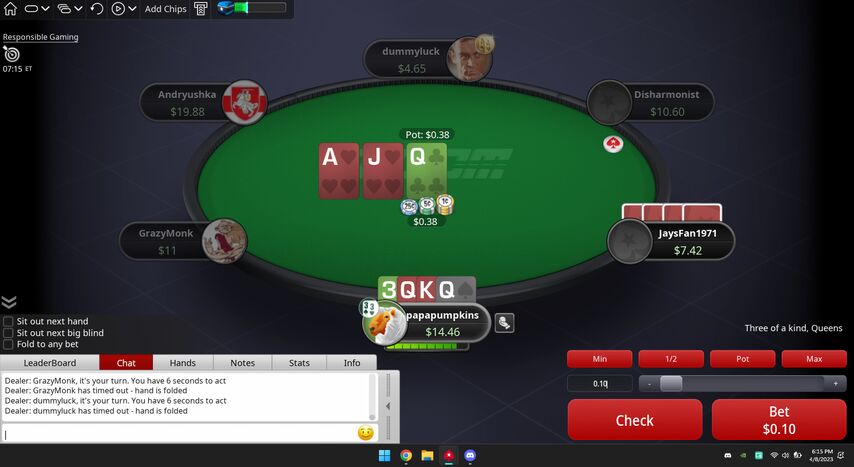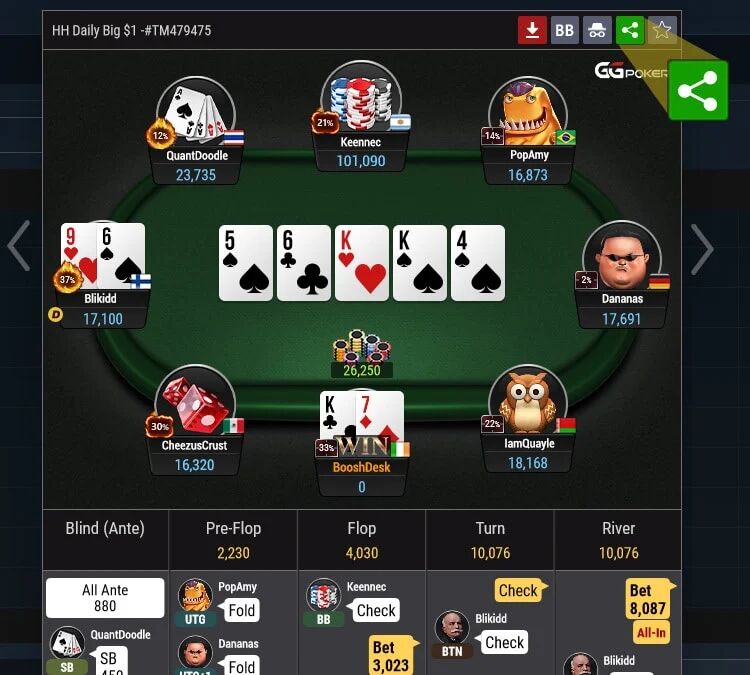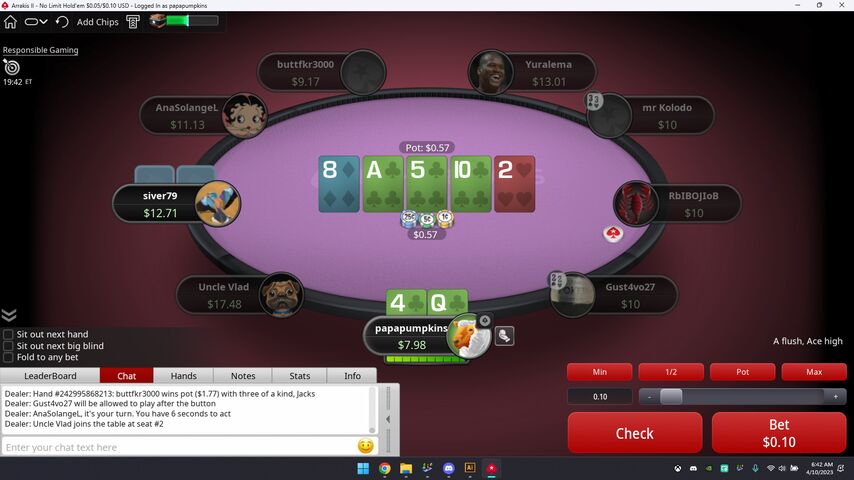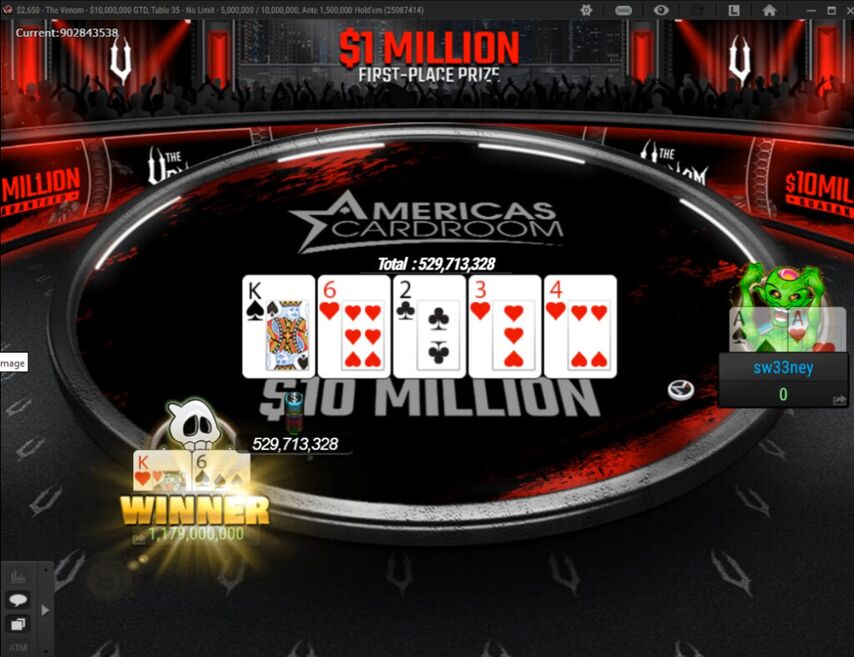Poker is a game with an element of probability. For anyone who doesn’t know about poker, it might seem like players wait for a strong hand and collect chips from unsuspecting opponents. In reality, professional players with better tactics are consistently winning tournaments and crushing cash games.
A poker tactic is a plan or strategy a player uses to win more often and minimize losses. Poker players like Phil Ivey are a testament to the skill and tactical elements of poker.

Some tactics are basic, like playing fewer hands than you usually would or being aware of position at the table. Other tactics are more specific, like playing stronger hands against aggressive opponents.
It doesn’t matter what your skill level is; every poker player can improve their tactics.
Tactic #1: Play Balanced Poker
Balance is not just for yoga and gymnastics, poker players need it too. Playing a balanced style of poker is one of the tactics that professionals use, but this can be tough for beginners.
Playing perfectly balanced means that you are playing your strong and weak hands in the same way. It’s extremely difficult to play perfectly balanced, but that’s the aim of Game Theory Optimal (GTO) tactics. If you play unbalanced poker, opponents will be able to avoid you when you’re strong and bluff you when you’re weak. If you only bet when you have a good hand, how will you win chips from weaker opponents?
Playing GTO is a pro poker tactic that players need to be aware of, especially for online poker.
You might be able to pick up some GTO strategies from Lex Veldhuis on Twitch or Youtube, who’s part of the PokerStars team. He does a fantastic job of guiding his audience through his decisions.
Lex uses PokerStars, a site that comes highly recommended with a spread of online poker formats, from the popular to the obscure. They have the classics like hold ‘em and Omaha, but there are over a dozen other games like short deck, 5-card draw, 5-card Omaha, and more. The tournament line-up is especially attractive on the weekends when the biggest events begin. Any new players can pick up a $30 Freeplay Bonus for any deposit of $10 or more, plus PokerStars will match any deposits under $600.

Tactic #2: Adjust Strategy For Aggressive Players
We’ve all been in this position. There’s an aggressive opponent at the table and they put a lot of pressure on other players. Dealing with this style of player is tricky for beginners.
Here’s a way to avoid losing too many chips against an opponent like that.
Tighten up your range. This means playing stronger hands with more equity against the aggressive player. For example, you might remove low suited and off-suit connectors (4-5, 5-6, 6-7, etc) and play stronger suited connectors like Jack-ten, Jack-Queen, King-Queen, and so on. This isn’t the only strategy to employ against an aggressive opponent, but it will help you improve your equity against them.
Understand your position in the hand. It’s preferable if they act first, giving you a chance to act afterward. This is known as playing “in position” and it’s an important part of all types of poker. You get information from your opponents first, then you can decide on your next move.
When you are in position, you’ll be able to make raises more profitably with your premium hands. Since it’s easier for you to play in position, re-raise (3-bet) opponents for value with the top of your range (AA-KK-QQ-JJ-AK-AQ-AJ-A10 and so on).
When you are out of position, it’s fine to check and face bets from your opponents. Players who are out of position generally don’t lead the betting in a round, unless they were the last one to raise. You’ll usually check and call bets from out-of-position with medium-strength hands.
Tactic #3: How to “Trap” Opponents
Trapping an opponent means disguising the strength of your hand to maximize your profit. Sometimes it’s fantastic, fooling opponents into losing lots of their chips. Other times, trapping can backfire and lose a ton of money for the player who thought they were trapping.
Trapping always works best against fewer opponents. Let’s say you have pocket aces and you see a flop with four other players. With that many opponents, there’s an increased chance that one will create a stronger combination by the end of the hand.
Don’t try to trap other players too often. In general, it’s best to be betting when you have strong hand combinations or strong draws. Trapping can be a low-value tactic if your opponent only bets when they have strong hands. It’s a good idea to play balanced poker and mix some traps into your strategy, but not the majority of the time.

Using a player’s stats can help you decide who to trap and who to bet against. GGPoker has a built-in heads-up display on their online poker tables called SmartHUD. It will help you see how aggressive opponents are and how to get value from them. The tables also display the hand history for simple sharing after a big hand.
Tactic #4: Know How to Get Value From Opponents
Getting value in poker means getting your opponent to put chips into the pot with a weaker hand. When we have a strong hand like a straight, we want to get value from weaker hands like pairs, two-pair, or sets.
Build a range that your opponent could have. You can estimate the hands in this range by using their betting (or checking) throughout the hand. Of course, it's impossible to know their hole cards with complete certainty, but we still need to construct a range. Without thinking about what our opponent could have, we are just hoping for the best outcome.
Charge drawing hands and deny opponents “free cards”. When you have a dominant hand combination, you need your opponent to “catch up” so that you can make value. Other times, your hand might be vulnerable. If you have pocket aces, but your opponent is drawing to a flush, you should not allow them to see turn and river cards for free. This is called “charging the draws” and making them pay a price to see the next cards, while your chance of winning is high.
When you are way ahead, don’t make your opponent fold. If you have a strong hand, but your opponent has no pair and no draws, how can you get value? Think about the cards you have before you bet.
Ask yourself a quick question; “what can my opponent have here?” It doesn’t always make sense to make your opponent fold if you have a very strong hand. You might want to let them catch up so that you can get more value from the hand.

Tactic #5: Don’t Overplay Strong Pocket Pairs
Pocket aces are known as the strongest preflop hand in Texas hold ‘em poker, but that can change after the flop cards come.
Sometimes strong pocket pairs like kings or aces get “cracked” and beaten by weaker hole cards. Every poker player goes through this, but how can you avoid it?
As the board (community cards) change, so does the strength of your hand. This goes back to understanding your opponent’s range. Your hand may have been premium during the preflop stage, but you’ve got to be careful as the betting rounds progress.

Here we can see pocket aces getting “cracked” by King-six in a huge America’s Cardroom tournament. They run over $12,000,000 in guaranteed prize pools every week, with a lot of large tournaments on Sundays. Try the Sunday Squeeze for $10.50 and take a shot at $50,000 GTD, or the $265 Million Dollar Sunday for a $1,000,000 guaranteed prize pool.
There’s a huge matched bonus waiting for new players at ACR. They’ll match any deposit of $25 or more, up to a whopping $2000. Read more about America’s Cardroom in our full review of the over-20-year-old poker room.

























